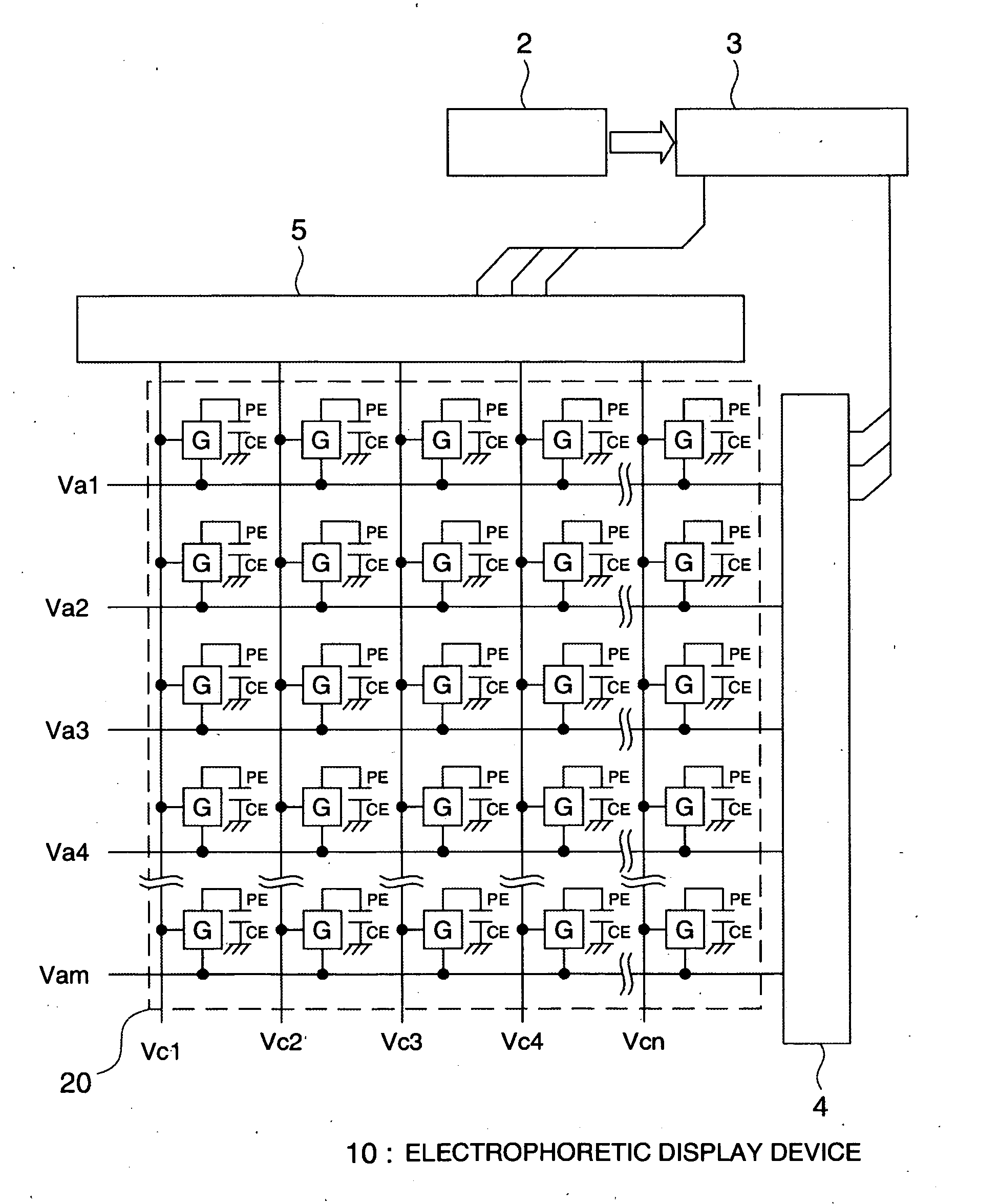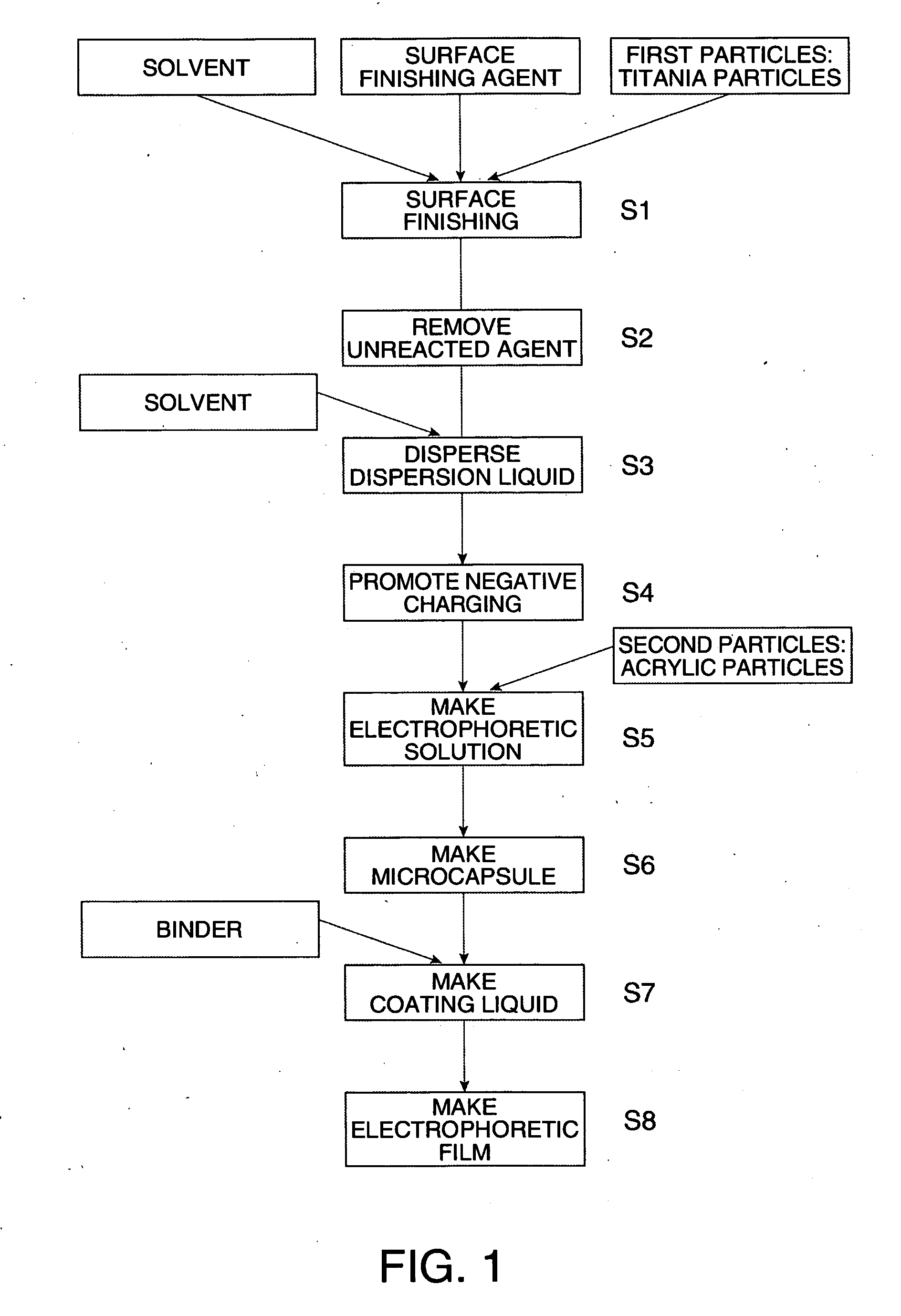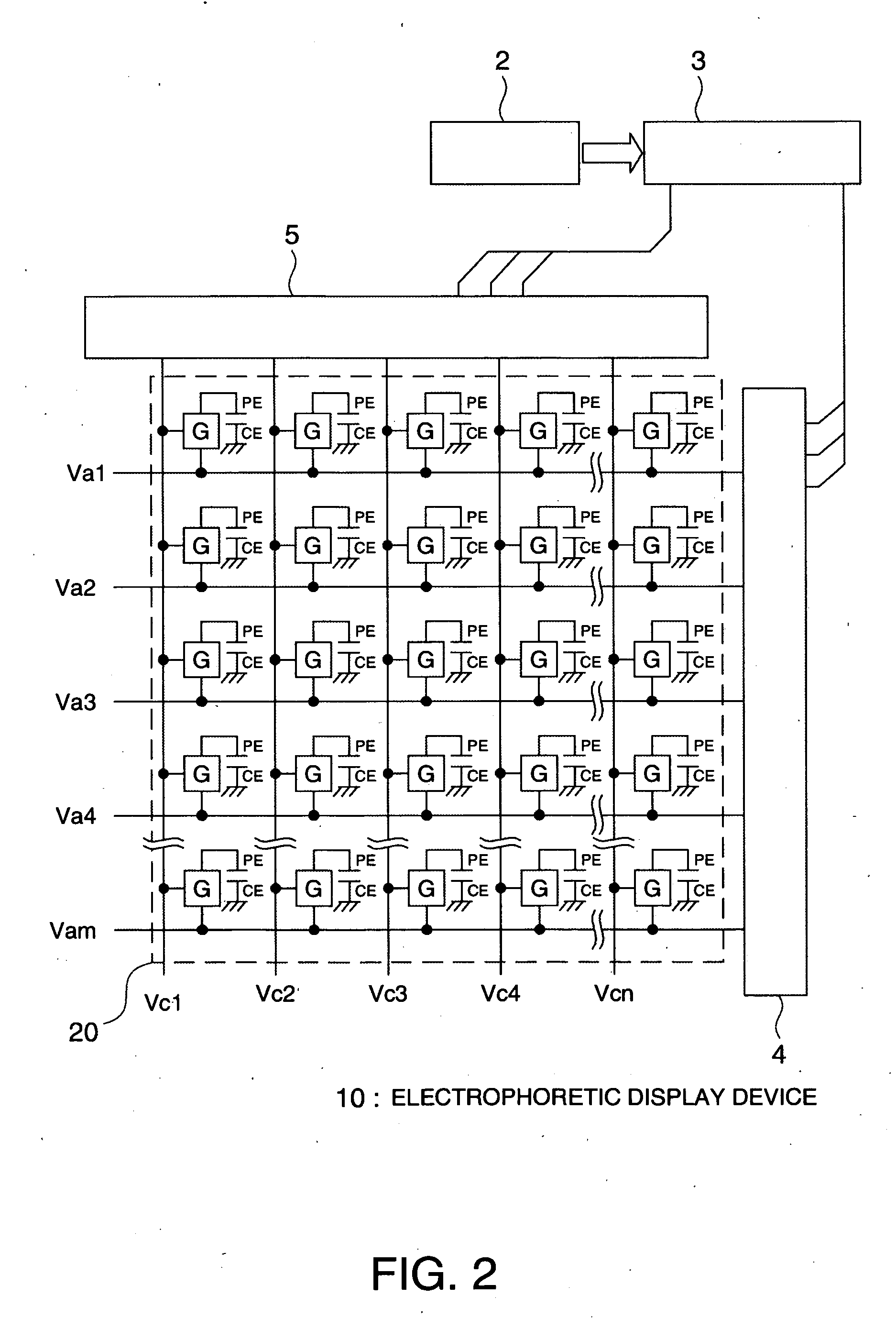Dispersion, microcapsule, electrophoretic device, electro-optical device, and method of forming a dispersion
a technology of electrophoretic devices and microcapsules, applied in static indicating devices, non-linear optics, instruments, etc., can solve the problems of inefficient development, difficult to find a proper quantity of particles to be included, and significant differences between the sizes, weights, etc. of positively charged particles and negatively charged particles, etc., to achieve preferable display performance and preferable results
- Summary
- Abstract
- Description
- Claims
- Application Information
AI Technical Summary
Benefits of technology
Problems solved by technology
Method used
Image
Examples
working example
[0052] In order to obtain a preferable mixing ratio, the embodiment of the invention has been put into practice under various conditions.
[0053] In a working example described below, a-comparison has been performed by changing the particle mixing ratio alone, at various mixing ratios W1 / W2 of the mixed quantity W1 of the first particles (titania particles) to the mixed quantity W2 of the second particles (acrylic particles). Roughly according to the following steps, electrophoretic solutions have been made for the working example and comparative examples so as to examine the visibility of electrophoretic films using the solutions.
[0054] According to the flow chart shown in FIG. 1, an electrophoretic solution has been made and a film has been formed.
[0055] 1) A step for finishing the surfaces of titania particles to be charged negative as the first particles (S1);
[0056] 2) a step for removing the above composition having unreacted groups above finishing agent having the unreacted ...
PUM
| Property | Measurement | Unit |
|---|---|---|
| temperature | aaaaa | aaaaa |
| particle size | aaaaa | aaaaa |
| size | aaaaa | aaaaa |
Abstract
Description
Claims
Application Information
 Login to View More
Login to View More - R&D
- Intellectual Property
- Life Sciences
- Materials
- Tech Scout
- Unparalleled Data Quality
- Higher Quality Content
- 60% Fewer Hallucinations
Browse by: Latest US Patents, China's latest patents, Technical Efficacy Thesaurus, Application Domain, Technology Topic, Popular Technical Reports.
© 2025 PatSnap. All rights reserved.Legal|Privacy policy|Modern Slavery Act Transparency Statement|Sitemap|About US| Contact US: help@patsnap.com



